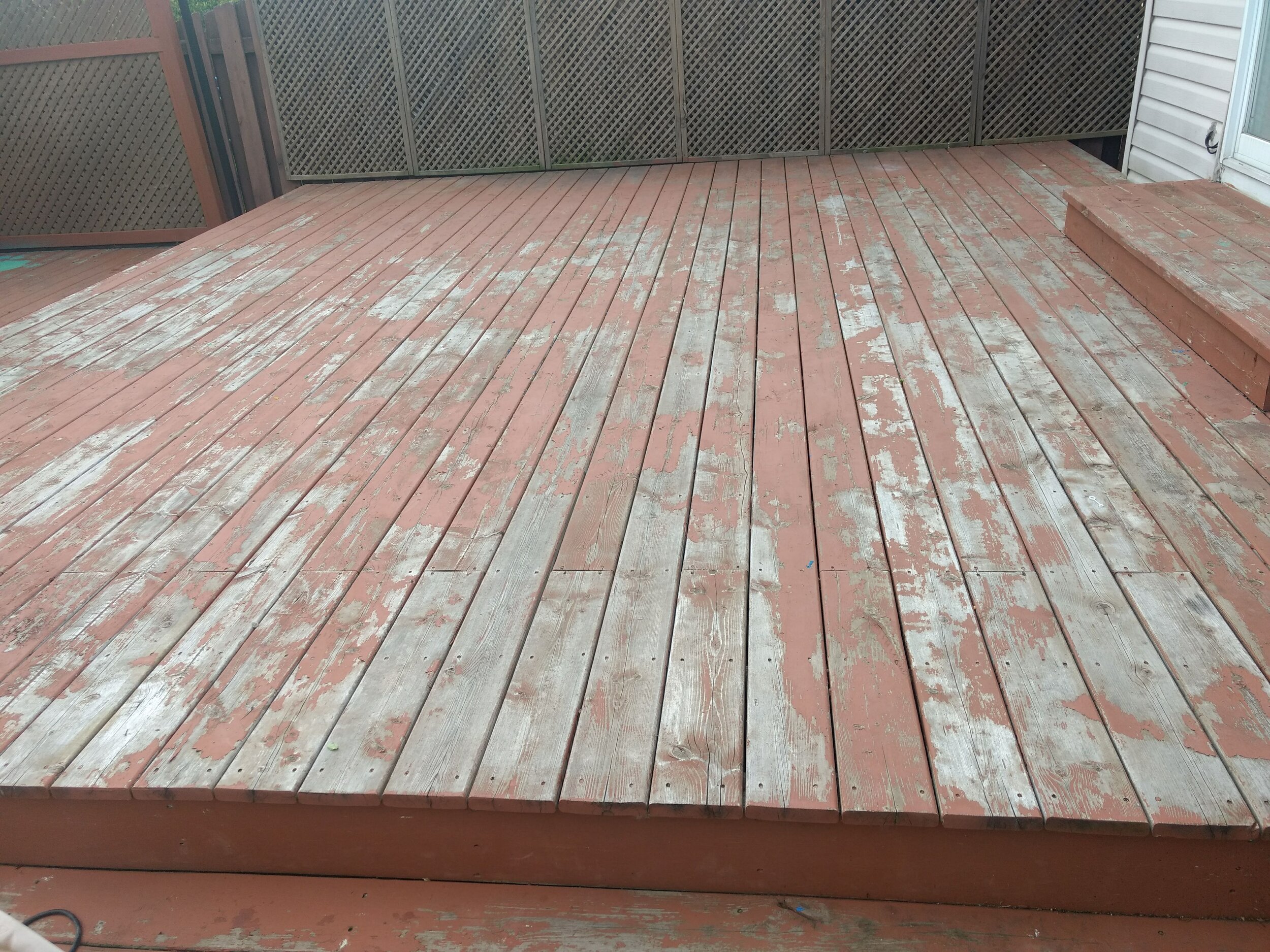Why Your Deck Peels Every Year
We get calls for staining brand new decks, restoring old faded gray wood decks, and everything in between. Without question, the number one reason people seek help for their deck is out of sheer frustration that their deck peels every single year, no matter what they do, or who they call.
Some feel gypped for buying the most expensive product in the store only to see it fail after its first winter. Others are completely discouraged their deck is chipping after spending countless hours sanding it. Neither are wrong to feel this way. There are many reasons a deck can fail and you might have everything exactly right except for one piece of it.
The two biggest reasons a deck peels are:
1) Inadequate (or Zero) Prep Work
The most common reason a deck fails is the prep work is not done properly-- if at all. Wood needs to be sanded for the stain to penetrate deep into the pores so it isn’t sitting on top of the wood like a paint. When using an oil based stain, the wood needs to fully dry before applying stain.
After a deck has been properly sanded, it’s fine to wash the deck before applying stain re-coats for years before wanting to sand again. Use a light pressure hose head on a wide fan setting (pressure washing is not recommended as it could damage the wood.) This method works when using true penetrating oils opposed to thicker or most water based products.
Wait a few days after rain or washing before applying product to your deck and try to avoid staining too early or late in the season when it takes longer for moisture to fully dry out. Attempt to stain your wood several days before it’s scheduled to rain next.
With an oil based stain, it’s crucial the deck is dry before applying. Use a less-is-more attitude when applying penetrating oil stains as they are designed to protect from the inside and keep the wood lubricated. Refrain from applying thick layers or several coats at once.
2) Poor Quality Product
Film forming stains and top coats, as well as most water based or hybrid stains are designed to form a protective layer on top of the wood. This layer may protect for some time, but eventually blisters, cracks, or peels and needs to be stripped before anything else can be done.
This happens for many reasons:
wood shrinking and expanding with the temperature
rain and elemental wear-and-tear break it down
thick product + multi-coats at once, making it impossible to penetrate into the wood
film forming products can chip and break from deck furniture, BBQs, shoveling, pet paws & playing children, etc.
We recommend using true penetrating oil stains that are transparent / translucent so they can be re-coated for years before needing to be sanded again (if ever.) Avoid all opaque / solid water based stains and thicker semi-solid or even semi-transparent stains and finishes to prevent peeling. Yes, even hybrid stains have issues lasting over the winter or if applied in too many layers or in the direct sun.
In Summary…
Now you know you need both the proper prep technique and the proper product in place for predictable and lasting results. The good news you’re only two steps away from a gorgeous deck that will never peel again.
If you’re reading this because your deck finish has failed (or want to make sure you get it right the first time), feel free to use the exact same system we use for clients in our own local business here: Sand & Stain System.
OR
If you’re all ready to purchase true penetrating oil stains we approve of and will never peel if prepped and applied correctly, jump right ahead to our online Stain & Supply Shop.



